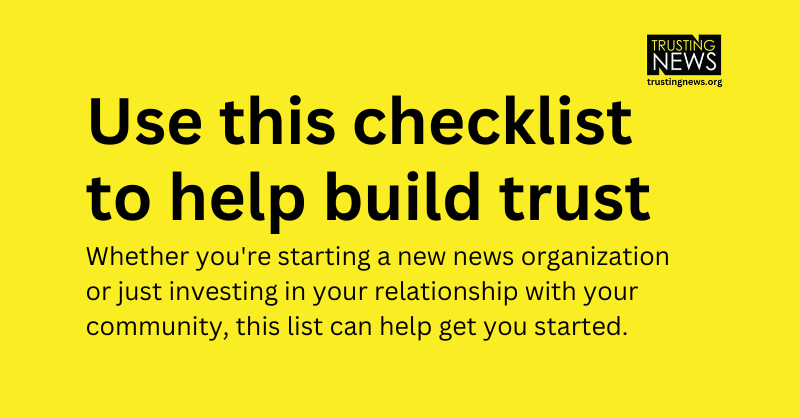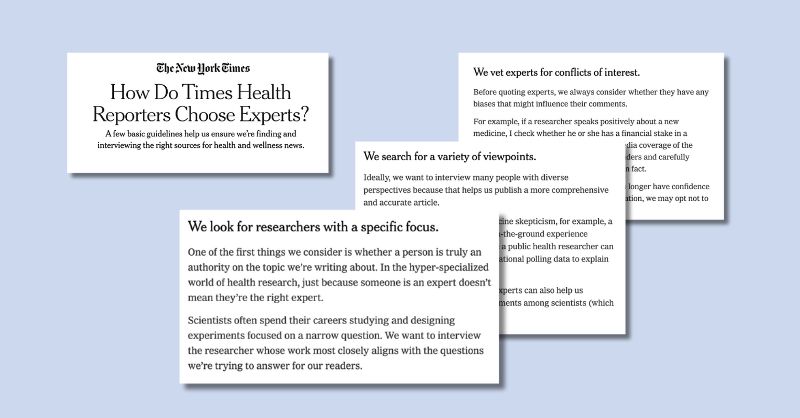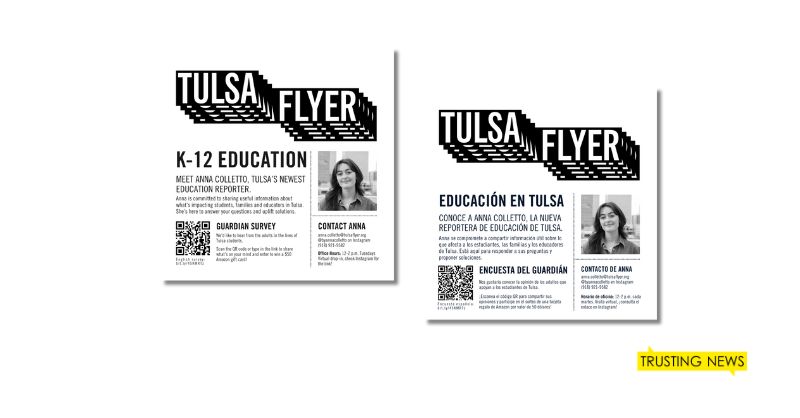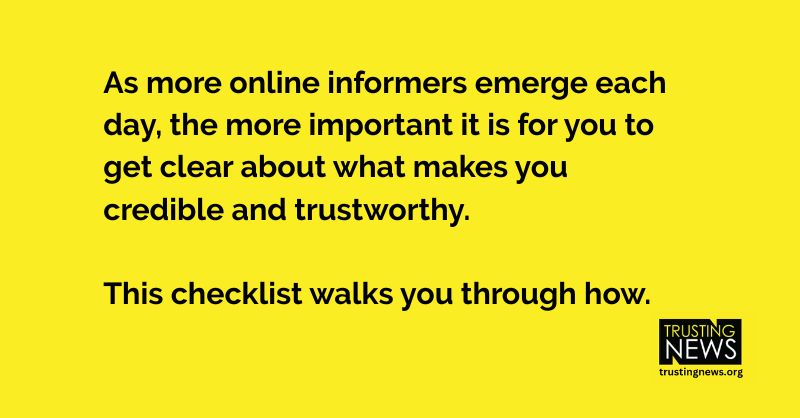
The start of a new year usually is accompanied by a slew of new priorities, KPIs and goals for newsrooms. On top of that, it’s an election year. We know there are many things (rightfully) demanding priority and your attention. As journalists who care about building trust but who might be feeling strapped for time, we want […]
Use these checklists to start (or level up) your trust building
The start of a new year usually is accompanied by a slew of new priorities, KPIs and goals for newsrooms. On top of that, it’s an election year. We know there are many things (rightfully) demanding priority and your attention.
As journalists who care about building trust but who might be feeling strapped for time, we want to make it simpler and easier for you to build trust.
That’s where today’s newsletter comes in: A checklist of foundational things news organizations can do to build trust.
Whether you’re starting a new news organization or just investing in your relationship with your community, this list can help you get started. A shout-out to Dana Amihere, founder and executive director of AfroLA, who originally gave us this idea after asking if we had a checklist of “to-do items” for start-up newsrooms.
We’ve heard a similar sentiment echoed by partner journalists in recent conversations: Journalists are bought into the idea of building trust, maybe have even already done some trust-building work, but don’t always know what the next step is to level up or continue earning trust.
We hope today’s newsletter will be a helpful jumping-off point for what to do next and where to focus your efforts.
Quick reminder — you’re not on your own! Our team is always here to help (with more detailed options on all the ways you can work with us here!). Reach out to us by replying to this email or send us a message on LinkedIn or X (formerly Twitter).

Starting from scratch: A checklist for earning trust
Use this checklist to gauge where you can continue building trust with your community.
- Ask how you can better earn trust. As journalists, listening and being in conversation with our community should be a routine part of our work. How can journalists effectively serve audiences without first knowing who it is they are serving and how well they’re doing it? (Spoiler: You can’t!). In this listening Trust Kit, we walk you through how to listen to your audience with curiosity and how it can help. Note: This can seem like a big task, but it doesn’t have to be. Start small, committing to one conversation (online or in-person) a month.
- Share your mission and goals. Take your organization’s mission statement and explain what it really means. (If you do not have a mission statement, start the process of putting one together by listing what your values are.) Break down what seeking truth means. Explain what holding people accountable means. Talk about what being fair means, and how that aligns with your goals as a news organization. We wrote more about how to do this here, which includes examples from other newsrooms.
- Insert transparency into daily coverage. It’s great (and necessary!) to be transparent and get on the record about your processes. But it’s in vain if your audience isn’t seeing this transparency. That’s why it’s so important to include transparency in your daily coverage. We know it can be tough to picture what transparency can look like in day-to-day coverage. Start here, with our Transparency Trust Kit. It walks journalists through how to decide when transparency elements are needed in day-to-day coverage, how to write them, and how to share them publicly with your audience.
- Share your ethics policy and how you work to be fair. People don’t give journalists automatic credit for the ethical decisions we make. And people definitely aren’t giving us credit for trying to do fair, even-handed reporting. Rather than hope they’ll offer us the benefit of the doubt, get on the record about your ethics and how you work to be fair. This Trust Kit walks you through how to do this. And in this version of the SPJ Code of Ethics, we explain how to make each bullet point visible to the public.
- Create a corrections policy. Despite our best efforts, we as journalists sometimes get it wrong. When this happens, people don’t think journalists own up to their errors, and that leads to mistrust. Instead, get on the record about your corrections policy and how you correct errors.
- Talk about what you will and won’t cover. Your audience notices what you cover — and what you don’t cover. If you don’t explain your coverage decisions, that can lead to negative assumptions about your movies. This Trust Kit helps you counter this by getting on the record (internally and externally) about how you make coverage decisions.
- Talk about who you are. As a journalist, you should be striving to connect with your audience and humanize your reporting (doing so can help build trust). That means creating an effective About Us page, introducing your staff, and writing individual reporter mission statements.
- Get clear with labeling and opinion content. How many times has someone accused you or your organization of bias based on an analysis, editorial or column? Not being able to tell opinion content from news content can be really frustrating for users. And usually for good reason: News organizations often don’t make it easy to tell the difference, or really explain the role of opinion content in the newsroom. Use our opinion audit to get on the record about it.
A checklist to level up
If you’ve already done all of the above tasks, you’re off to an amazing start! And if you’re looking to level up, here are some next steps with linked resources to help you along the way.
- Change how you hire. Newsrooms need more variety in the lived experiences, values and perspectives represented on staff. Our hiring guide can help you evolve your interview process.
- Make your coverage less polarizing. Too often, journalism amplifies extreme views and ignores more nuanced ones, which can lead to news coverage feeling biased, not one-sided. This Anti-Polarization Checklist walks reporters and editors through how to use a depolarizing lens when looking at a story’s headline, framing and language.
- Explain funding and ownership. Talking about who owns your news organization can be an important part of earning the trust. Explain who owns your news organization and how you make money, and those factors influence news coverage.
- Talk about sourcing. Journalists usually have reasons for interviewing and quoting specific sources, but those reasons are invisible to our audiences unless we explain them. Start explaining why you include specific voices or data in your coverage.
- Build trust within the newsroom. To reach and accurately cover diverse audiences, newsrooms have to first be open to talking about their differences internally. Our Dimensions of Difference program is a newsroom culture guide that walks you through how.
- Help people navigate the news. New fatigue is real, y’all. Help your audience by infusing news literacy into your daily coverage.
We added hundreds of newsroom examples
We just updated our Newsroom Example Database with a few hundred(!) examples. Check them out at trustingnews.org/examples.
Some new examples you’ll find:
- Scott Blanchard at WITF wrote a behind-the-scenes email about the newsroom’s relationship with a congressional candidate and got on the record about how the newsroom will handle coverage of that candidate.
- Josie Hollingsworth at PolitiFact used an Instagram video to establish the newsroom’s ethics and processes, while also asking for financial support.
- The Keene Sentinel helped their audience become more news literate by publishing tips for how people could determine if what they see online is credible or not.
- When writing about a topic they knew would be controversial, The St. Louis Post Dispatch included a transparency box alongside the story that explained how the story was sourced.
If you have examples of how your newsroom is building trust, share them by replying to this email or through this form.
Applications are open! Advancing Democracy fellowship
Applications are now open for the Advancing Democracy fellowship, an ongoing collaboration with Hearken and Solutions Journalism to offer newsrooms support on their coverage of elections and democracy.
This fellowship is designed to help newsrooms think big, plan long-term, and reinvent politics, governance and elections coverage with and for their communities. It runs from February through October.
The application is open through Jan. 19. Please reach out to our team if you have any questions!
Connect with us!
We’d love to talk about how your newsroom is working to build trust and demonstrate credibility! Feel free to reach out to us on LinkedIn, Twitter or email us at info@trustingnews.org.

Project manager Mollie Muchna (she/her) has spent the last 10 years working in audience and engagement journalism in local newsrooms across the Southwest. She lives in Tucson, Arizona, where she is also an adjunct professor at the University of Arizona’s School of Journalism. She can be reached at mollie@trustingnews.org and on Twitter @molliemuchna.



